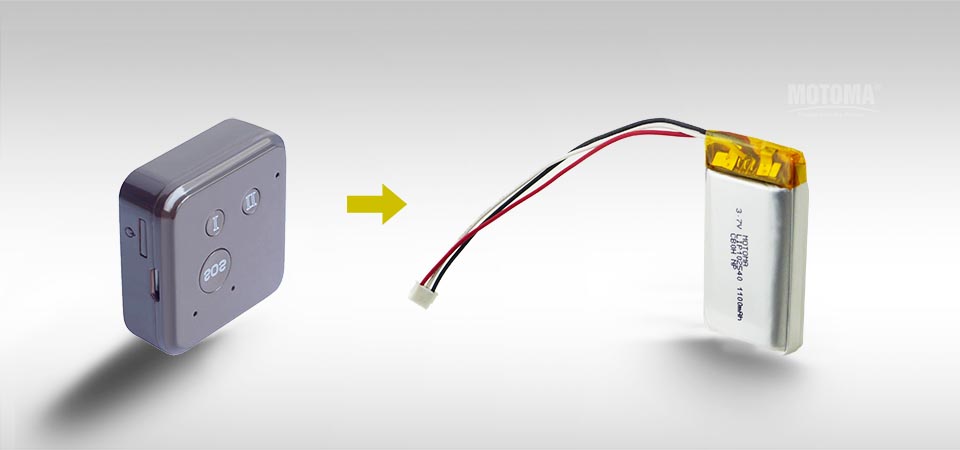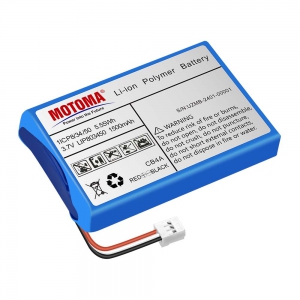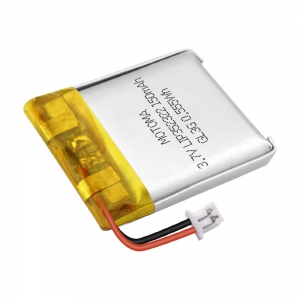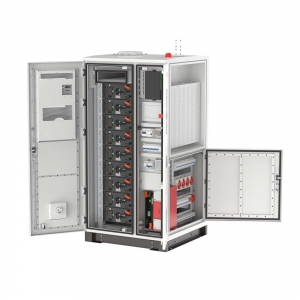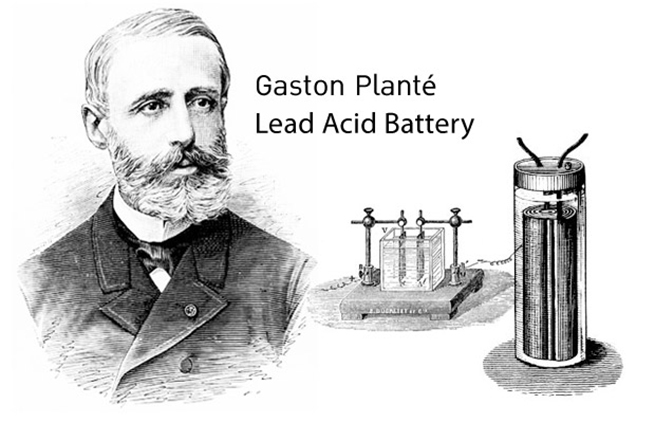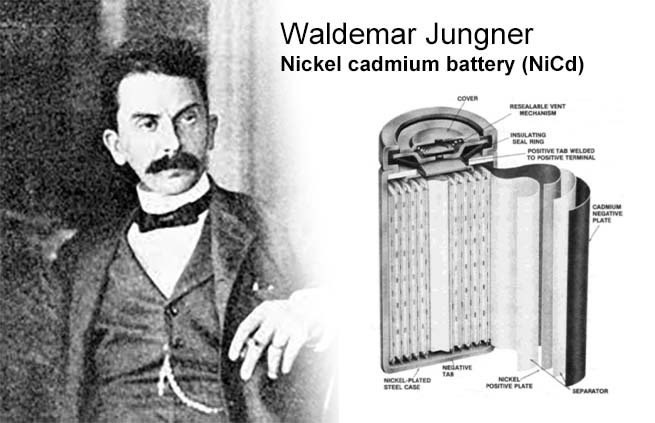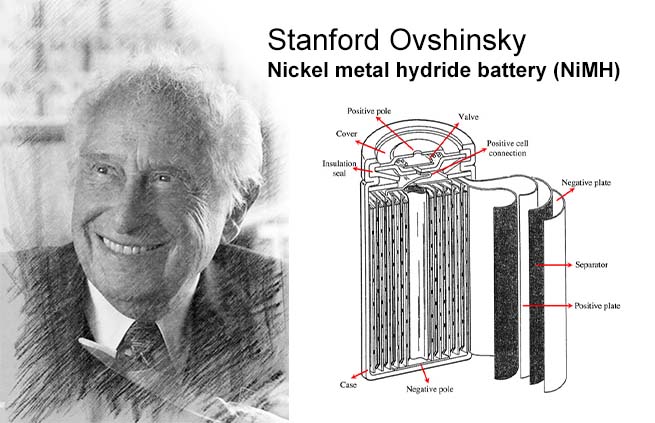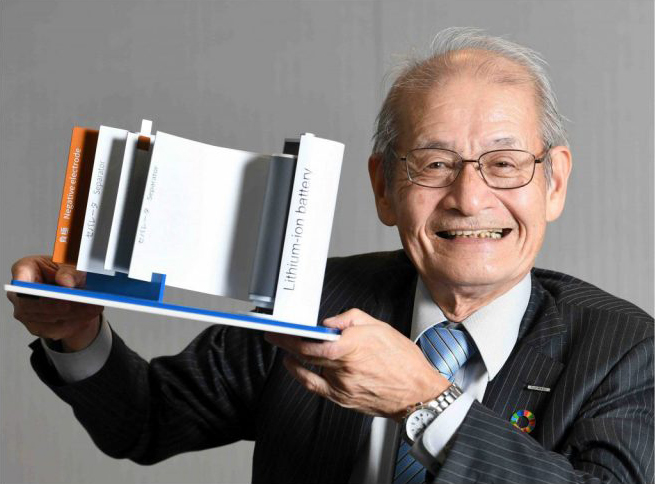Products
3.7V High Density LiPo Battery 1500mAh
Nominal Voltage: 3.7 V
Nominal Capacity: 1500 mAh
Working temperature range: -20℃ ~ +60℃
High battery consistency
Low internal resistance
Sufficient battery capacity
Outstanding cycle life
Battery Chemistry: Lithium Ion Polymer
Battery Terminations: PC Pins (...
3.7V low temperature li poly battery 150mAh
Working temperature range:-40~60 centigrade
Voltage: 3.7 V
Capacity: 150 mAh
Long cycle life: capacity retention is >80% after 500 times standard cycles
Low internal resistance
Sufficient battery capacity
Outstanding cycle life
Optimized PCM design
In series...
High Temperature Rehargeable Lipo Battery 7.4V
Work temperature range: -20~85 centigrade
Voltage: 7.4 V
Capacity: 2800 mAh
High energy density
Long lifespan
Excellent safety
Battery Chemistry: Li Ion Polymer
Battery Terminations: PC Pins (Horizontal) / (Vertical), SMT (SMD) Mount, Solder Tabs, Wires, Cables wi...
3.7V Fast Charging Lithium Battery 720mAh
Nominal Voltage: 3.7 V
Nominal Capacity: 720 mAh
Working temperature range: -20℃ ~ +60℃
High battery consistency
Low internal resistance
Sufficient battery capacity
Outstanding cycle life
Battery Chemistry: Lithium Polymer
Battery Terminations: PC Pins (Horiz...
Ultra Thin Lithium Polymer Battery 0.9mm
Ultra-thin design.
High energy density.
Long lifespan.
Excellent safety.
Battery Chemistry: Lithium Ion Polymer
Battery Terminations: PC Pins (Horizontal) / (Vertical), SMT (SMD) Mount, Solder Tabs, Wires, Cables with Connectors.
Battery Customizing: Custom design shap...
7.4V High C LiPo Battery 1500mAh
2C Fast discharge
Contiuous high discharge current, low internal resistance,excellent safety
Voltage: 7.4 V
Capacity: 1500 mAh
Low internal resistance
Sufficient battery capacity
Outstanding cycle life
Optimized PCM design
In series connection or in parallel co...
Lithium Ion Battery 3.7V ICR14500 800mAh
First-class brands cell, and choose the best among the best.
Internal synchronization for reliability testing.
The high-precision automatic matching machine improves the consistency of the battery pack and the cycle life of the whole pack.
Fully automatic laser welding reduces the...
Lithium Ion Battery ICR16650 3.7V 2000mAh
First-class brands cell, and choose the best among the best.
Internal synchronization for reliability testing.
The high-precision automatic matching machine improves the consistency of the battery pack and the cycle life of the whole pack.
Fully automatic laser welding reduces the...
Lithium Ion Battery ICR18650 2200mAh 3.7V
First-class brands cell, and choose the best among the best.
Internal synchronization for reliability testing.
The high-precision automatic matching machine improves the consistency of the battery pack and the cycle life of the whole pack.
Fully automatic laser welding reduces the...
Lithium Ion Battery ICR18650 2500mAh 3C
A grade battery cell.
Long cycle life, high energy density, good consistency, safe.
Environment-friendly, rechargeable, no memory effect.
Fully automatic laser welding reduces internal resistance of battery pack.
Customized design service of BMS, support intelligent communicat...
Lithium Ion Battery ICR18650 2600mAh 3C
First-class brands cell, and choose the best among the best.
Internal synchronization for reliability testing.
The high-precision automatic matching machine improves the consistency of the battery pack and the cycle life of the whole pack.
Fully automatic laser welding reduces the...
Lithium Ion Battery ICR 18650 3200mAh 3.7V
First-class brands cell, and choose the best among the best.
Internal synchronization for reliability testing.
The high-precision automatic matching machine improves the consistency of the battery pack and the cycle life of the whole pack.
Fully automatic laser welding reduces the...
50kWh 100kWh Smart Energy Storage System Battery Cluster Cabinet
Rated Power: 50KW Output & 100KWh Battery
PV Array Power 50,000 W
Dimension: 510*680*195mm
MPPT Range 4 MPPT 200 - 850 VDC
Support Parallel Up to 16 Units (800 KW)
IP54 Waterproof & Dustproof
Made By Fresh Grade A Cells
>6000 Cycles @ DOD 80%
Intelli...
High Voltage Energy Storage Battery 409V
Nominal Voltage: 409.6.2V
Nominal Capacity: 50Ah
Power capacity(Wh): 20.48 kWh
IP Level: IP65
Battery Type: Stackable high voltage battery
Cell Cycle Life: 6000 times
Communication: CAN / RS485
Certification: UL/IEC/CE/UN38.3/MSDS
SKU: M35D 20kWh 409.2V Categories: Household Energy Storage,...
Stackable High Voltage Battery 15kWh 307V
Nominal Voltage: 307.2V
Nominal Capacity: 50Ah
Power capacity(Wh): 15.36 kWh
IP Level: IP65
Battery Type: Stackable high voltage battery
Cell Cycle Life: 6000 times
Communication: CAN / RS485
Certification: UL/IEC/CE/UN38.3/MSDS
SKU: M35D 15kWh 307.2V Categories: Household Energy Storage, L...
Stackable energy storage battery 10kWh 50Ah
Nominal Voltage: 204.8V
Nominal Capacity: 50Ah
Power capacity(Wh): 10 kWh
IP Level: IP65
Battery Type: Stackable energy storage battery
Cell Cycle Life: 6000 times
Communication: CAN / RS485
Certification: UL/IEC/CE/UN38.3/MSDS
SKU: M35D 10kWh 50Ah Categories: Household Energy Storage, LiFe...
Battery Backup System 10kWh 51.2V 200Ah BESS
Quick details of LiFePO4 Battery
Nominal Capacity: 51.2V 200Ah
Power Efficiency: >96%
Dimension: 510*680*195mm
Battery Type: 48V LiFePO4 Battery pack
Module parallel: up to 10 packs
Communication: CAN/RS232/RS485.
Certification: UL/IEC/CE/UN38.3/MSDS
SKU: M88PW-51.2V200Ah ...
Home Backup Battery Energy Sotrage System 15.36kWh 51.2V 300Ah
Quick details of LiFePO4 Battery
Nominal Capacity: 51.2V 300Ah
Power Efficiency: >96%
Dimension: 510*680*195mm
Battery Type: 48V LiFePO4 Battery pack
Module parallel: up to 10 packs
Communication: CAN/RS232/RS485.
Certification: UL/IEC/CE/UN38.3/MSDS
SKU: M89-51.2V300Ah Ca...
Solar Inverter 24V 4000W Motoma
230V Pure Sine Wave Smart Solar Inverter
Rated power: 1500W/3000W/5000W
Output 230V with MPPT Blueooth LCD
Support BMS and LiFePO4 Battery
SKU: MOTOMA Axpert VM 3-5KW Categories: 230V Inverter, Hybrid Inverter Tags: 48V Inverter, Hybrid Inverter, Inverter, MPP...
Solar Energy Hybrid Inverter 48V 5000W
48V 5000W Pure Sine Wave Smart Solar Inverter
Output 110V with MPPT Blueooth LCD
Support BMS and LiFePO4 Battery
Dimension: 140 x 295 x 468mm
Weight: 12kg
SKU: SO-SIV-G4MKSC-48V5KVA-P Categories: 230V Inverter, Hybrid Inverter Tags: 48V Inverter, Hybrid Inverter, Inverter, MPPT inverter, Sol...
Smart Solar Inverter 48V 6500W 110V
48V 6500W Pure Sine Wave Hybrid Solar Inverter
Output 110V with MPPT Bluetooth LCD
Support BMS and LiFePO4 Battery
Dimension: 147.4 x 432.5 x 553.6mm
Weight: 18.4kg
SKU: 48V6.5KW-Inverter Categories: 110V Inverter, Hybrid Inverter Tags: 110V inverter, 48V, 48V Inverter,...
Off-grid Solar Hybrid Inverter 24V 3000W
24V 3000W Pure Sine Wave Smart Solar Inverter
Output 230V with MPPT Blueooth LCD
Support BMS and LiFePO4 Battery
Dimension: 115 x 300 x 400mm
Weight: 9kg
SKU: 24V3000W-Inverter Categories: 230V Inverter, Hybrid Inverter Tags: 24V Inverter, 3000W Inverter, MPP Solar Inve...
Solar Inverter 48V 6000W MPPT
230V Pure Sine Wave Smart Solar Inverter
Rated power: 1500W/3000W/5000W
Output 230V with MPPT Blueooth LCD
Support BMS and LiFePO4 Battery
SKU: MOTOMA Axpert VM 6KW Categories: 230V Inverter, Hybrid Inverter Tags: 48V Inverter, Hybrid Inverter, Inverter, MPPT ...
Solutions
Solutions





